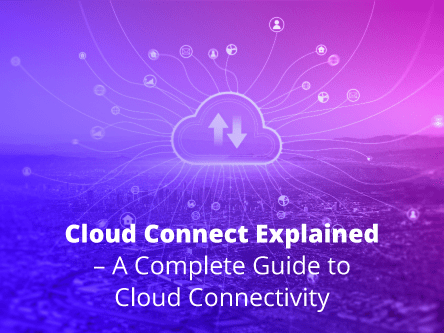Whether you are building a single, hybrid or multi-cloud environment, no metric is more important than uptime. For many organisations, the data and applications deployed in the cloud form the backbone of their business.
In 2020, 25% of respondents worldwide reported the average hourly downtime cost between $301,000 and $400,000. A further 17% reported costs of more than $5 million (Statista). Clearly, downtime is not only detrimental to the day-to-day operations of the business, but also to the financial health of the company.
Organisations should consider using a multi-cloud approach to mitigate the risk of outages. They should also look for reliable cloud networking that maximises performance and multi-cloud management.
The Downsides of Downtime
When it comes to downtime, even temporary outages can cost businesses a large amount. Back in 2013, Amazon.com went down for about 30 minutes, costing them an estimated nearly $2 million in lost sales, based on quarterly revenue reports.
Not only is downtime bad for the company itself, but also for all its customers. An example of this is when a hyperscaler or cloud service provider (CSP) experiences extended periods of downtime. For example, Amazon Web Services’ (AWS) four-hour outage in 2017 was estimated to cause a loss of $150 million to S&P 500 companies.
An outage can have an impact beyond monetary loss. It could compromise data, equipment, productivity, and brand reputation. This can have lasting effects on an organisation, so it is vital to have the steps in place to maximise uptime. Give your business the best chance of pulling through when CSPs experience outages.
More Clouds, More Uptime
Businesses that spread their workloads across the clouds can greatly reduce the impact of any outages. They are ready to react to any form of infrastructure meltdown or an attack. Being able to quickly move their data and applications to between multiple cloud is an advantage. When deployed over a private network, it can also eliminate performance and security challenges.
Each CSP has its strengths and weaknesses. A multi-cloud approach allows you to choose a mix of the best provider and services that best fit your business needs. It enables greater flexibility for businesses to innovate rapidly by taking advantage of unique sets of cloud computing services offered by the different providers. On top of this, it enables businesses to move faster to meet commercial demands and accelerate cloud deployments.
Many businesses are now using multiple public clouds for their data and applications. They need the capability to efficiently coordinate disparate workloads, manage workflows and integrate processes. A multi-cloud networking solution enables the orchestration of data, applications and infrastructure across several cloud environments. It simplifies service deployments by connecting applications and workflow processes. Rapid delivery of services can be a huge differentiator in the market.
With a single provider, it is simple to spread data, applications and infrastructure across multiple clouds and locations. A highly optimised interconnection can be achieved through a private network, enabling higher availability and security with dedicated encrypted connections.
Connecting to the Last Mile
Last mile connectivity is as important when it comes to maximising uptime and improving reliability. This makes connecting from branch locations to the cloud more seamless and efficient. Instead of managing multiple vendor relationships and connections yourself, an expert partner can do this for you.
As companies transform their business operations, the importance of having the right underlay network to support it is essential. At Epsilon, we make it simple for you to connect branch offices, on-prem data centres and partner locations around the world to the Epsilon network and its cloud networking and interconnection services.
Our Access solution solves the procurement challenges that come with global supplier relationships. We provide a single source for connecting multiple sites around the world, to make local access simple and affordable.
With end-to-end cloud networking, you will be able to manage any risk of downtime and ensure your business is always up and running. Get in touch with us to learn how to gain better control over your cloud environments with operational visibility and control.








